By Leen Randell
Updated: Jul 19, 2024
10 Best Herbal Creams For Leg Cramps
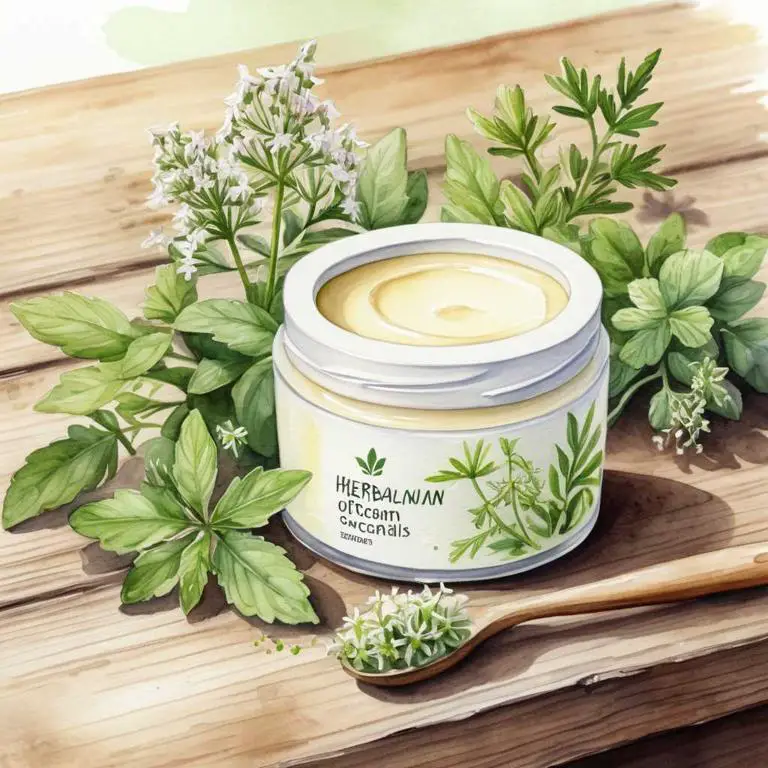
Herbal creams for leg cramps are topical ointments or balms infused with natural herbs and essential oils to relieve muscle spasms and discomfort.
These creams help by reducing inflammation, relaxing muscles, and improving blood circulation. Examples include arnica, peppermint, and ginger-based creams.
They can provide instant relief from intense leg cramps, allowing individuals to move freely and resume daily activities, improving their overall quality of life and reducing the risk of long-term damage.
The following article describes in detail the most important creams for leg cramps, including medicinal properties, parts of herbs to use, and recipes for preparations.
- 1. Hamamelis virginiana
- 2. Gaultheria procumbens
- 3. Salix alba
- 4. Aloe vera
- 5. Arnica montana
- 6. Echinacea angustifolia
- 7. Mentha x piperita
- 8. Boswellia serrata
- 9. Capsicum annuum
- 10. Eucalyptus globulus
- What is the best combination of herbal creams to use for leg cramps?
- What ailments similar to leg cramps are treated with herbal creams?
1. Hamamelis virginiana
Hamamelis virginiana, also known as American Witch Hazel, creams helps with leg cramps because of its anti-inflammatory and soothing properties.
The natural astringent and antioxidant compounds present in Hamamelis virginiana help to reduce muscle spasms and alleviate pain. The cream's cooling sensation also helps to relax the muscles, reducing tension and cramping.
By applying the cream directly to the affected area, individuals can experience quick relief from leg cramps, making it a popular natural remedy for this common and often debilitating issue.
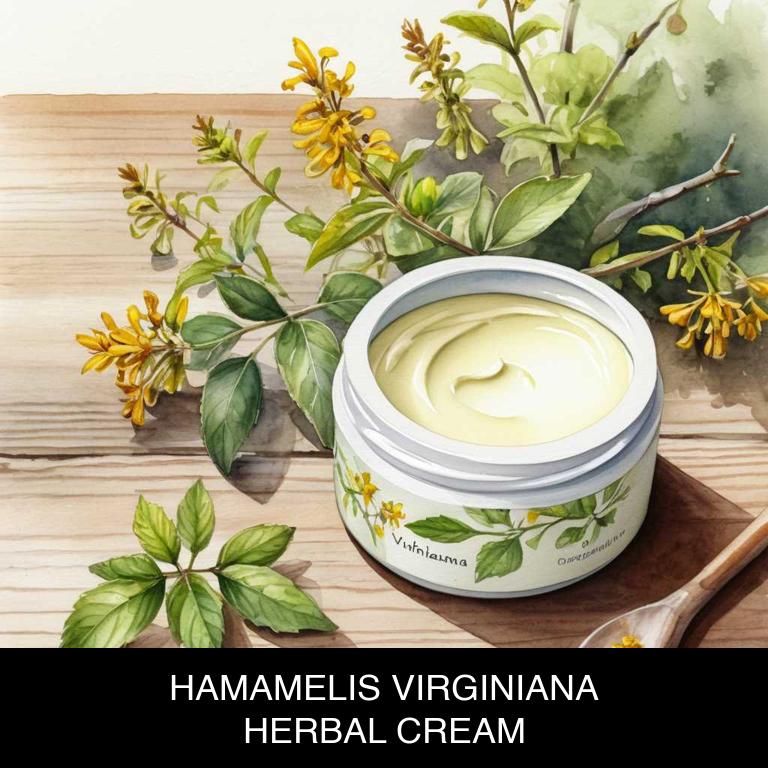
Medicinal Constituents
The list below shows the primary medicinal constituents in Hamamelis virginiana creams that help with leg cramps.
- Tannins: They help reduce inflammation and spasms in the muscles, providing relief from leg cramps by constricting blood vessels and reducing fluid accumulation.
- Phenolic acids: These compounds possess anti-inflammatory and antioxidant properties, which may help alleviate muscle cramps by reducing oxidative stress and inflammation in the affected area.
- Hamamelitannin: A unique compound found in Hamamelis virginiana, it has been shown to have anti-inflammatory and vasoconstrictive properties, which can help reduce blood flow to the affected muscles and alleviate leg cramps.
Parts Used
The list below shows the primary parts of american witch hazel used to make creams for leg cramps.
- Roots: They are used due to their high concentration of hamamelitannin, a compound with anti-inflammatory and antispasmodic properties that help relieve leg cramps.
- Leaves: They are used because they contain a range of bioactive compounds, including flavonoids and phenolic acids, that have anti-inflammatory and antispasmodic effects to alleviate muscle spasms.
- Barks: They are used due to their high content of hamamelitannin, a compound that has been shown to reduce inflammation and relax muscles, providing relief from leg cramps.
Quick Recipe
The following recipe gives a procedure to make a basic american witch hazel for leg cramps.
- Harvest 50g of dried hamamelis virginiana leaves and flowers from a trusted source and store them in a cool place.
- Steam distill the dried plant material in a 30:1 ratio of water to plant for 2 hours to obtain a fragrant essential oil.
- Combine 100g of shea butter with 20g of beeswax in a double boiler and heat until the mixture reaches 160°f.
- Mix 5ml of the essential oil with 50g of distilled water and add it to the shea butter mixture.
- Whip the mixture with a hand mixer for 5 minutes until it reaches a smooth and creamy consistency.
2. Gaultheria procumbens
Gaultheria procumbens, also known as wintergreen, creams helps with leg cramps because it contains methyl salicylate, a natural anti-inflammatory compound.
This active ingredient mimics the pain-relieving effects of aspirin, reducing muscle spasms and inflammation that can cause leg cramps. The cream also relaxes tense muscles, allowing for improved blood flow and reduced discomfort.
As a result, Gaultheria procumbens creams can provide quick and effective relief from leg cramps, making it a popular natural remedy for this common issue.
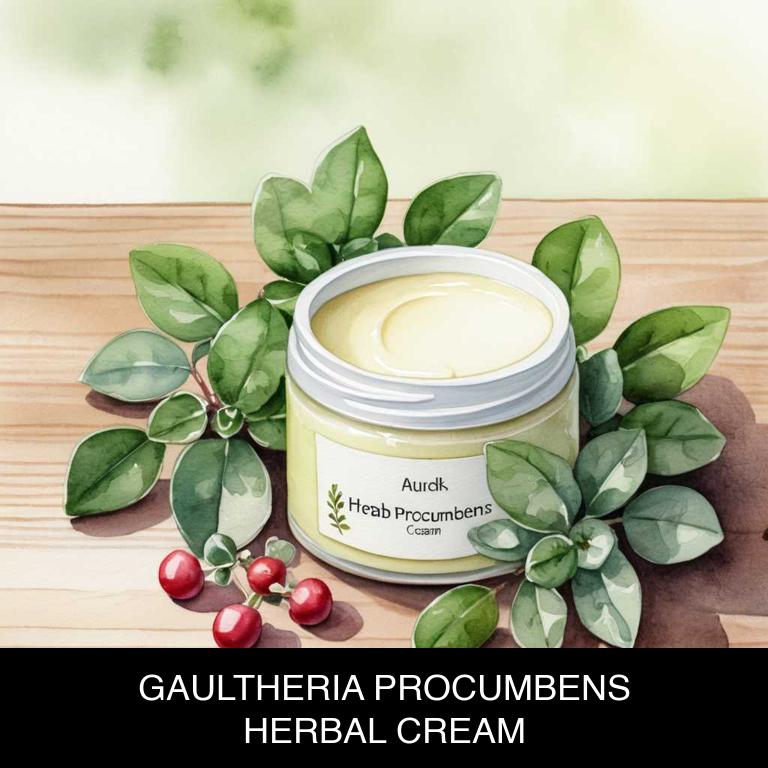
Medicinal Constituents
The list below shows the primary medicinal constituents in Gaultheria procumbens creams that help with leg cramps.
- Volatile oil: This terpene constituent helps with leg cramps by relaxing muscle spasms and reducing inflammation due to its analgesic and anti-inflammatory properties.
- Phenolic acids: These compounds help with leg cramps by reducing pain and inflammation, as well as exhibiting antioxidant properties that mitigate muscle damage.
- Gaultherin and its derivatives: These compounds help with leg cramps by acting as a natural muscle relaxant, reducing muscle spasms and pain, and also by exhibiting anti-inflammatory and antioxidant properties.
Parts Used
The list below shows the primary parts of wintergreen used to make creams for leg cramps.
- Roots: They are used due to their rich content of salicin, which helps to relieve pain and reduce inflammation associated with leg cramps.
- Leaves: They contain compounds with analgesic and anti-inflammatory properties, making them a suitable addition to creams for treating leg cramp discomfort.
- Rhyzomes: The rhyzome's salicin content and other bioactive compounds help to soothe and relax muscles, alleviating the symptoms of leg cramps.
Quick Recipe
The following recipe gives a procedure to make a basic wintergreen for leg cramps.
- Harvest 1 cup of fresh gaultheria procumbens leaves and stems from a clean and organic source.
- Dry the harvested leaves and stems in a dehydrator at 95 degrees fahrenheit for 6 hours.
- Steep 1/4 cup of dried gaultheria procumbens in 2 cups of carrier oil such as coconut oil for 2 weeks.
- Strain the infused oil through a cheesecloth into a clean container discarding the solids.
- Mix 2 tablespoons of the infused oil with 1 tablespoon of beeswax and 1 tablespoon of shea butter to create a cream.
3. Salix alba
Salix alba, also known as white willow, creams helps with leg cramps because of its anti-inflammatory and pain-relieving properties.
The cream contains salicin, a natural compound that is converted into salicylic acid in the body, similar to aspirin. This action helps to reduce pain and inflammation in the muscles, particularly in the legs, relieving cramping and discomfort.
Additionally, the cream's soothing and cooling effects can also help to calm the muscles, providing relief from spasms and cramps.
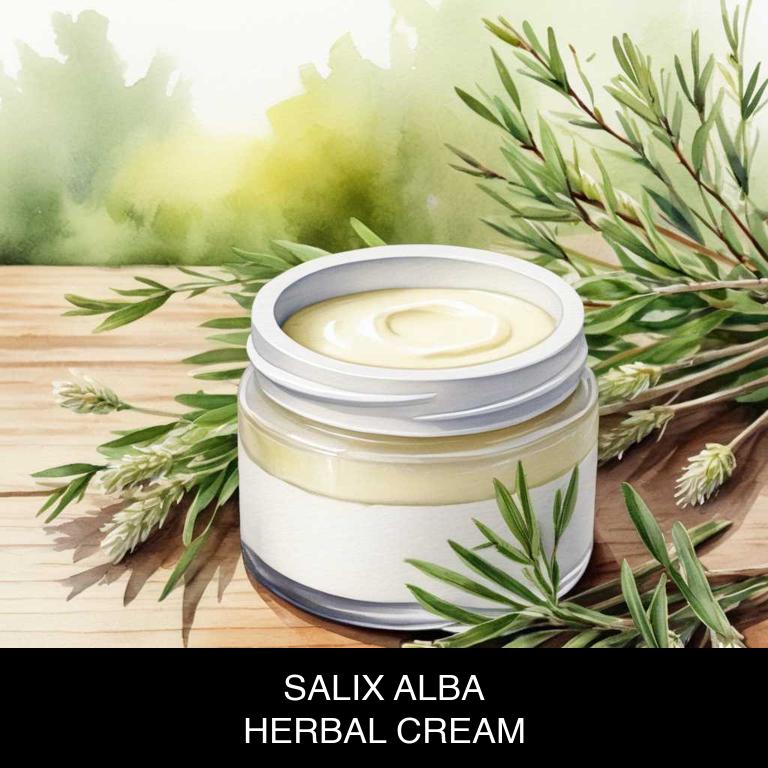
Medicinal Constituents
The list below shows the primary medicinal constituents in Salix alba creams that help with leg cramps.
- Salicylic acid: It helps with leg cramps by acting as a natural anti-inflammatory and analgesic, reducing pain and inflammation in the muscles.
- Salicin: It helps with leg cramps by acting as a natural muscle relaxant, reducing muscle spasms and cramping by inhibiting the release of certain neurotransmitters.
- Flavonoids: They help with leg cramps by acting as natural antioxidants and anti-inflammatory compounds, reducing muscle inflammation and oxidative stress that can contribute to muscle cramping.
Parts Used
The list below shows the primary parts of white willow used to make creams for leg cramps.
- Barks: Salix alba barks are used due to their high content of salicylic acid, which has anti-inflammatory and pain-relieving properties.
- Stems: Salix alba stems are used because they contain compounds that help to relax muscles and reduce spasms associated with leg cramps.
- Leaves: Salix alba leaves are used due to their antioxidant and anti-inflammatory properties, which can help to soothe and calm muscle cramps.
Quick Recipe
The following recipe gives a procedure to make a basic white willow for leg cramps.
- Harvest 20g of dried salix alba bark and 10g of beeswax at the same time.
- Combine 50ml of distilled water and 20g of the salix alba bark in a saucepan.
- Boil the mixture for 30 minutes then remove it from heat and strain.
- Mix 20g of beeswax with 20g of coconut oil and 10g of shea butter in a separate saucepan.
- Combine the two mixtures and blend them until they reach a smooth creamy texture.
4. Aloe vera
Aloe vera, also known as aloe, creams helps with leg cramps because of its anti-inflammatory properties, which help to relax and soothe the muscles.
The cream's cooling and calming effect can reduce muscle spasms and ease the pain associated with leg cramps. Additionally, aloe vera contains vitamins A, C, and E, as well as other essential nutrients, which help to nourish and hydrate the skin, reducing the frequency and severity of leg cramps.
Its natural ingredients make it an effective and gentle remedy for relief.

Medicinal Constituents
The list below shows the primary medicinal constituents in Aloe vera creams that help with leg cramps.
- Anthraquinones: These compounds, particularly aloe-emodin, have anti-inflammatory and muscle relaxant properties, which help to alleviate muscle spasms and reduce pain associated with leg cramps.
- Saponins: Aloe vera saponins have been shown to possess anti-spasmodic and anti-inflammatory effects, which can help to calm muscle contractions and reduce the frequency and severity of leg cramps.
- Glycoproteins: Aloe vera glycoproteins, such as acemannan, have been found to have anti-inflammatory and soothing effects on muscles, which can help to reduce muscle tension and alleviate symptoms of leg cramps.
Parts Used
The list below shows the primary parts of aloe used to make creams for leg cramps.
- Leaves: Aloe vera leaves are rich in anti-inflammatory compounds that help reduce muscle spasms and alleviate cramp pain.
- Gel from leaves: The gel extracted from Aloe vera leaves is soothing and calming, which helps to relax muscles and ease leg cramp discomfort.
- Juice from leaves: The juice from Aloe vera leaves contains nutrients and compounds that help to reduce inflammation, relax muscles, and alleviate leg cramp symptoms.
Quick Recipe
The following recipe gives a procedure to make a basic aloe for leg cramps.
- Harvest 5-7 aloe vera leaves from mature plants at dawn when they are full of water and nutrients.
- Clean the leaves thoroughly with water to remove any dirt or debris from the surface.
- Extract the gel from the leaves by cutting them open and scooping out the clear inner gel mass.
- Mix the aloe vera gel with 1 tablespoon of beeswax and 2 tablespoons of coconut oil in a double boiler.
- Stir the mixture continuously over low heat for 10-15 minutes until the beeswax is fully incorporated and the mixture thickens.
5. Arnica montana
Arnica montana, also known as mountain arnica, creams helps with leg cramps because of its anti-inflammatory and pain-relieving properties.
The cream's active compounds, including arnica acid and helenin, work together to reduce muscle spasms and alleviate cramp pain. By reducing inflammation and promoting blood flow, Arnica montana cream can help relax tense muscles and provide quick relief from painful cramps.
This natural remedy is often used topically to soothe and calm the affected area, providing fast and effective relief.
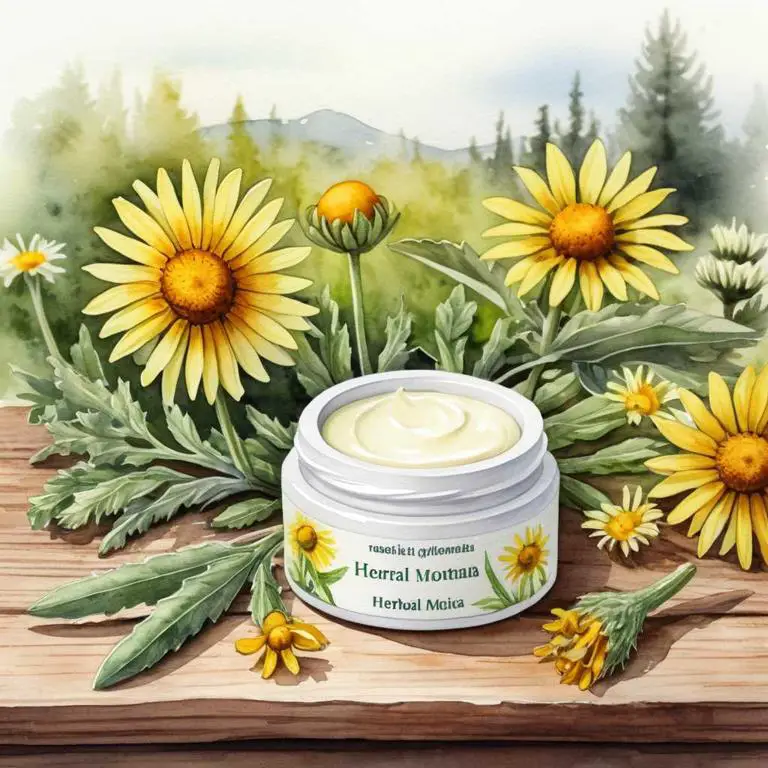
Medicinal Constituents
The list below shows the primary medicinal constituents in Arnica montana creams that help with leg cramps.
- Thiophene derivatives: Thiophene derivatives in Arnica montana have anti-inflammatory properties, which help reduce muscle spasms and cramps by reducing inflammation in the affected area.
- Flavonoids: Flavonoids in Arnica montana have antioxidant and anti-inflammatory effects, which help alleviate pain and cramps by reducing oxidative stress and inflammation in the muscles.
- Tremetol: Tremetol in Arnica montana has anti-inflammatory and analgesic properties, which help relieve pain and muscle spasms associated with leg cramps by reducing inflammation and blocking pain pathways.
Parts Used
The list below shows the primary parts of mountain arnica used to make creams for leg cramps.
- Flowers: They are used due to their anti-inflammatory and pain-relieving properties, which help alleviate muscle cramps and soreness.
- Leaves: They are used because of their ability to reduce inflammation and provide relief from muscle spasms and cramps.
- Roots: They are used due to their analgesic and anti-inflammatory properties, which help to soothe and relax muscles affected by cramps.
Quick Recipe
The following recipe gives a procedure to make a basic mountain arnica for leg cramps.
- Harvest 20-30 arnica montana flowers and leaves when they are in full bloom for maximum potency.
- Dry the arnica montana flowers and leaves in a single layer for 7-10 days at 30-40 degrees celsius.
- Grind the dried arnica montana flowers and leaves into a fine powder using a coffee grinder.
- Mix the arnica montana powder with 100 grams of beeswax and 100 grams of coconut oil in a double boiler.
- Stir the mixture until it thickens and reaches a temperature of 60-70 degrees celsius after 10-15 minutes.
6. Echinacea angustifolia
Echinacea angustifolia, also known as Kansas coneflower, creams helps with leg cramps because of its anti-inflammatory and antispasmodic properties.
The active compounds in Echinacea angustifolia, such as alkylamides and phenolic acids, work to relax muscles, reduce muscle spasms, and decrease inflammation, providing relief from leg cramps.
Additionally, Echinacea angustifolia creams may help to improve circulation and reduce oxidative stress, further alleviating the discomfort and pain associated with leg cramps, promoting overall well-being.
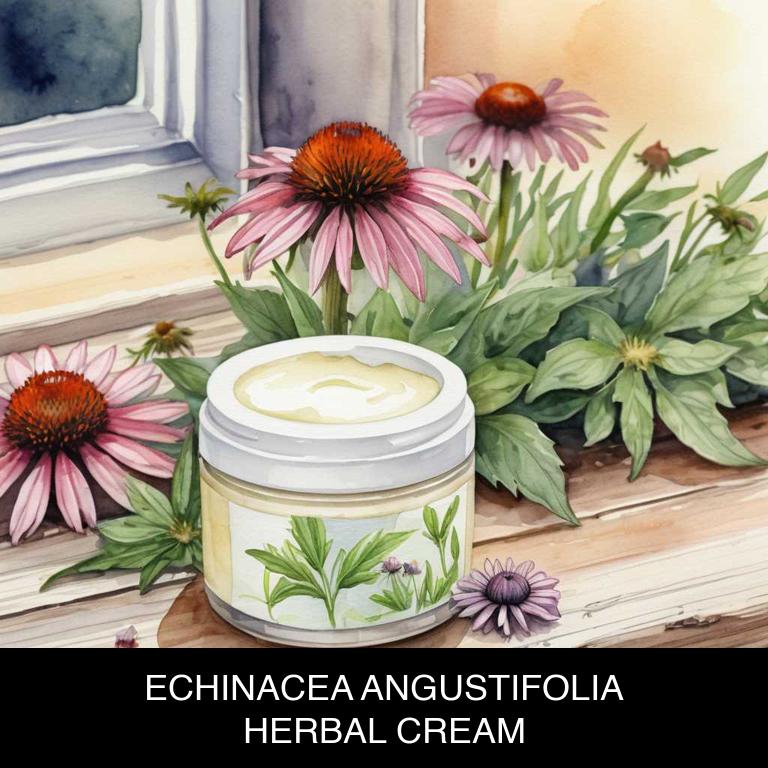
Medicinal Constituents
The list below shows the primary medicinal constituents in Echinacea angustifolia creams that help with leg cramps.
- Iridoid glycosides: These compounds help alleviate muscle cramps by acting as a natural muscle relaxant and reducing muscle spasms.
- Flavonoids: Flavonoids in Echinacea angustifolia help stabilize muscle cell membranes, preventing muscle cramps by maintaining proper muscle function and reducing inflammation.
- Triterpenes: Triterpenes in this herb have anti-inflammatory properties, which help reduce muscle inflammation and spasms associated with leg cramps.
Parts Used
The list below shows the primary parts of kansas coneflower used to make creams for leg cramps.
- Roots: Used due to their high concentration of alkaloids, particularly echinacoside and caftaric acid, which have anti-inflammatory and pain-relieving properties.
- Leaves: Utilized for their potential in reducing muscle spasms and inflammation, possibly due to the presence of caffeic acid and other compounds.
- Stems: Employed for their supposed ability to relax muscles and reduce cramping, possibly attributed to the presence of iridoid glycosides and other bioactive compounds.
Quick Recipe
The following recipe gives a procedure to make a basic kansas coneflower for leg cramps.
- Harvest 30-50 grams of dried echinacea angustifolia roots and clean them thoroughly.
- Dry the cleaned roots in a low-temperature oven at 150 degrees fahrenheit for 2 hours.
- Grind the dried roots into a fine powder using a coffee grinder or spice mill.
- Mix 1 gram of the powder with 10 grams of beeswax and 10 grams of coconut oil in a double boiler.
- Heat the mixture at 160 degrees fahrenheit for 20-30 minutes and then let it cool.
7. Mentha x piperita
Mentha x piperita, also known as peppermint, creams helps with leg cramps because of its natural muscle relaxant and anti-inflammatory properties.
The menthol in peppermint creams can help to ease muscle spasms and reduce pain by cooling the affected area and increasing blood flow. Additionally, the menthol can help to break down lactic acid buildup in the muscles, which is a common cause of cramping.
This can help to provide quick and effective relief from leg cramps, promoting relaxation and comfort.

Medicinal Constituents
The list below shows the primary medicinal constituents in Mentha x piperita creams that help with leg cramps.
- Menthol: Helps to relax muscles and reduce muscle spasms, providing relief from leg cramps.
- Menthone: Acts as a vasodilator, helping to increase blood flow to the affected area and relax muscle spasms.
- Rosmarinic acid: Exerts anti-inflammatory properties, which can help reduce pain and inflammation associated with leg cramps.
Parts Used
The list below shows the primary parts of peppermint used to make creams for leg cramps.
- Leaves: Mentha x piperita leaves are commonly used in creams for leg cramps due to their high concentration of menthol, which provides a cooling and relaxing effect.
- Roots: Mentha x piperita roots are used in creams for leg cramps as they contain a higher concentration of menthol than leaves, making them more effective for pain relief.
- Stems: Mentha x piperita stems are used in creams for leg cramps as they contain a mixture of menthol and other compounds that help to relax muscles and reduce pain.
Quick Recipe
The following recipe gives a procedure to make a basic peppermint for leg cramps.
- Harvest 1 cup of fresh menthaxpiperita leaves in the morning after the dew has evaporated for best flavor.
- Infuse the harvested leaves in 2 cups of boiling water for 5-7 minutes to create a strong tea.
- Strain the tea into a clean bowl and discard the solids then let it cool to room temperature.
- Mix 1/2 cup of beeswax with 1/4 cup of coconut oil in a double boiler over low heat for 10-15 minutes.
- Combine the cooled tea with the melted beeswax and coconut oil mixture then whip until smooth and creamy.
8. Boswellia serrata
Boswellia serrata, also known as frankincense, creams helps with leg cramps because it contains anti-inflammatory and analgesic properties that soothe muscle spasms and relax tense muscles.
The boswellic acids in frankincense cream reduce inflammation and pain in the affected area, providing quick relief from cramping.
Regular application of boswellia serrata creams may also help improve circulation and reduce muscle strain, further alleviating the discomfort associated with leg cramps, promoting overall muscle health and well-being.
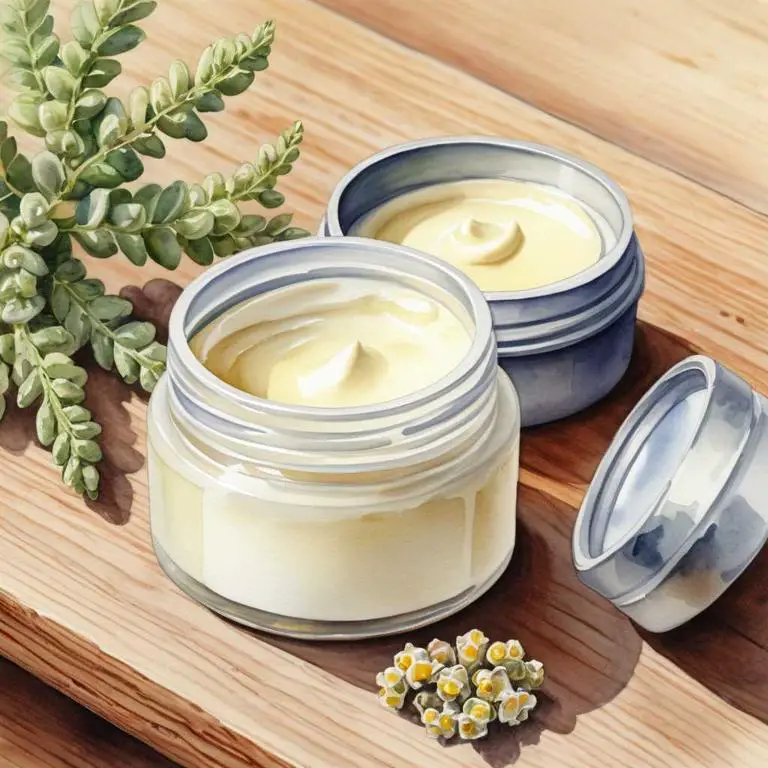
Medicinal Constituents
The list below shows the primary medicinal constituents in Boswellia serrata creams that help with leg cramps.
- Acetyl-11-keto-β-boswellic acid: AKBA has anti-inflammatory and analgesic properties, which may help reduce muscle cramp severity by reducing inflammation and pain in the affected area.
- Boswellic acids: BAs have anti-inflammatory and antioxidant properties, which may help alleviate muscle cramps by reducing oxidative stress and inflammation in muscles.
- Α-boswellic acid: α-BA has anti-inflammatory and anti-spasmodic properties, which may help reduce muscle cramp severity by relaxing muscle spasms and reducing inflammation.
Parts Used
The list below shows the primary parts of frankincense used to make creams for leg cramps.
- Roots: The roots contain boswellic acids, which are believed to help reduce inflammation and relieve pain associated with leg cramps.
- Rhyzomes: The rhyzomes of Boswellia serrata contain boswellic acids, similar to the roots, which may help in alleviating pain and inflammation caused by leg cramps.
Quick Recipe
The following recipe gives a procedure to make a basic frankincense for leg cramps.
- Weigh and combine 2 tablespoons of beeswax with 2 tablespoons of coconut oil in a double boiler.
- Heat the mixture over low heat for 10-15 minutes or until the beeswax is fully melted.
- Add 2 teaspoons of boswellia serrata extract to the mixture and stir well for 1 minute.
- Gradually add 4 tablespoons of distilled water to the mixture while whisking continuously for 3 minutes.
- Pour the mixture into a sterilized container and allow it to cool and solidify for 30 minutes.
9. Capsicum annuum
Capsicum annuum, also known as bell pepper, creams helps with leg cramps because they contain capsaicin, a natural pain-relieving compound.
When applied topically, capsaicin blocks the release of pain-causing chemicals in the body, providing quick relief from muscle cramps. The cream also increases blood flow to the affected area, reducing inflammation and promoting relaxation of the muscle.
This helps to alleviate cramping and discomfort, making it a popular natural remedy for people who experience frequent leg cramps.
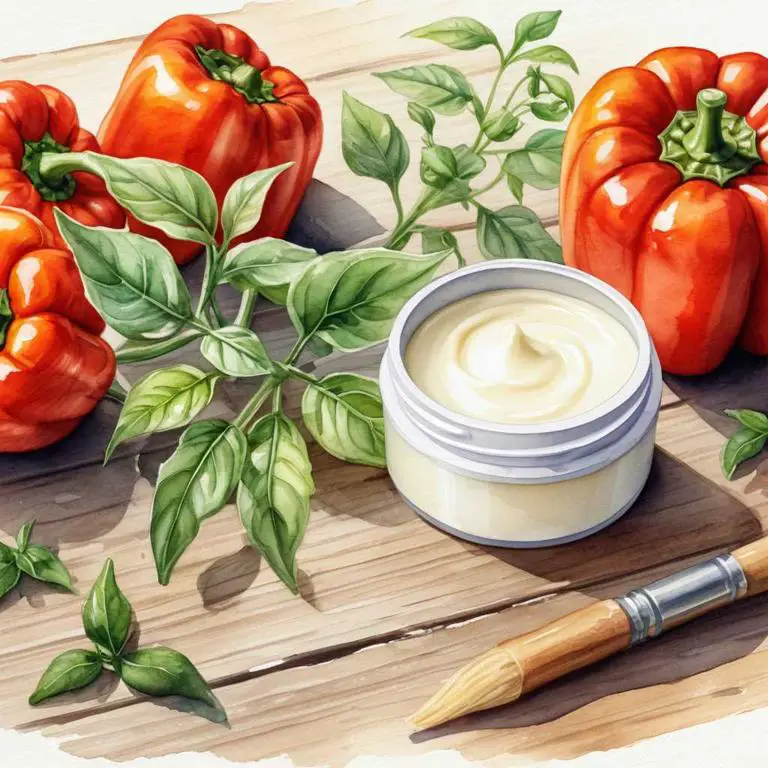
Medicinal Constituents
The list below shows the primary medicinal constituents in Capsicum annuum creams that help with leg cramps.
- Capsaicin: Capsaicin helps with leg cramps by blocking the nerve signals that cause muscle contractions, thereby reducing muscle spasms and pain.
- Quercetin: Quercetin helps with leg cramps by reducing inflammation and oxidative stress, which can contribute to muscle cramps and spasms.
- Rotenone: Rotenone helps with leg cramps by acting as a calcium channel blocker, which can help relax muscle contractions and reduce muscle pain.
Parts Used
The list below shows the primary parts of bell pepper used to make creams for leg cramps.
- Fruits: They are used to make creams for leg cramps due to their high content of capsaicin, which helps relieve pain and reduce inflammation.
- Seeds: They are used in creams for leg cramps due to their high oil content, which helps to reduce pain and inflammation in the affected area.
- Leaves: They are used in creams for leg cramps due to their high capsaicin content, which helps to relieve pain and reduce inflammation.
Quick Recipe
The following recipe gives a procedure to make a basic bell pepper for leg cramps.
- Weigh out 20 grams of dried capsicum annuum powder and store it in a bowl.
- Combine the dried capsicum annuum powder with 50 grams of beeswax in a double boiler.
- Heat the mixture in the double boiler for 30 minutes or until the beeswax is fully melted.
- Add 50 grams of coconut oil and 20 grams of shea butter to the melted mixture and stir well.
- Remove the mixture from the heat and let it cool completely before transferring it to a jar.
10. Eucalyptus globulus
Eucalyptus globulus, also known as Tasmanian blue gum, creams helps with leg cramps because of its unique properties that ease muscle spasms and relax the body.
The active compounds in Eucalyptus globulus, such as cineole and eucalyptol, have anti-inflammatory and analgesic effects, reducing pain and swelling in the affected area.
When applied topically, these creams can help to reduce muscle cramp frequency and severity by promoting relaxation and reducing muscle tension, providing quick relief and comfort to individuals experiencing leg cramps.
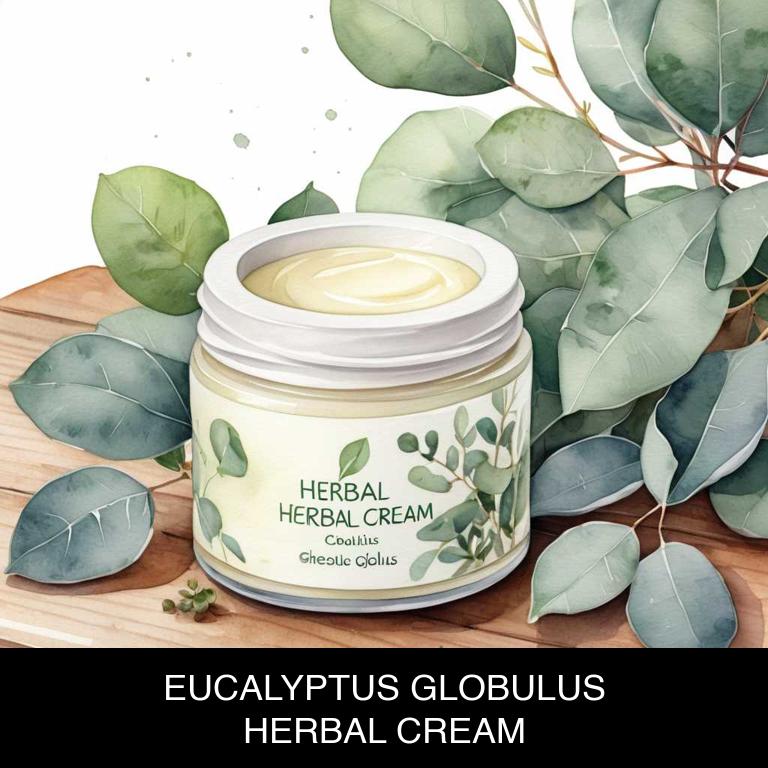
Medicinal Constituents
The list below shows the primary medicinal constituents in Eucalyptus globulus creams that help with leg cramps.
- Cineole: This terpene has anti-inflammatory properties, which may help reduce muscle inflammation and spasms associated with leg cramps.
- Catechin: As a phenolic compound, catechin has antioxidant properties that may help alleviate muscle damage and oxidative stress caused by muscle spasms.
- Linalool: This terpene has a relaxing effect on muscles, which may help reduce muscle contractions and spasms associated with leg cramps.
Parts Used
The list below shows the primary parts of tasmanian blue gum used to make creams for leg cramps.
- Leaves: Eucalyptus leaves contain eucalyptol, a natural compound that acts as a muscle relaxant and reduces pain.
- Barks: Eucalyptus bark contains a compound called salicylic acid, which has anti-inflammatory and pain-relieving properties.
- Stems: Eucalyptus stems also contain eucalyptol, which helps to relax muscles and reduce pain associated with leg cramps.
Quick Recipe
The following recipe gives a procedure to make a basic tasmanian blue gum for leg cramps.
- Harvest 20g of dried eucalyptus globulus leaves and grind them into a fine powder using a coffee grinder for 5 minutes.
- Mix 20g of the powdered eucalyptus globulus with 100g of coconut oil in a double boiler over low heat for 30 minutes.
- Add 10g of beeswax and 10g of shea butter to the mixture and melt them together for 10 minutes.
- Remove the double boiler from the heat and let the mixture cool for 10 minutes before whipping it with a hand mixer for 5 minutes.
- Pour the cream into a clean container and store it in the refrigerator for at least 30 minutes before use.
What is the best combination of herbal creams to use for leg cramps?
The best combination of herbal creams that help with leg cramps is a blend of arnica and peppermint.
Arnica, a natural anti-inflammatory, soothes and calms the affected area, reducing pain and swelling. Peppermint, with its cooling properties, helps relax the muscles and ease cramping. Adding a small amount of ginger cream to this combination can further enhance its effectiveness, as ginger's warming properties can help increase blood flow and reduce spasms.
This trio of creams can provide quick and long-lasting relief from leg cramps.
What ailments similar to leg cramps are treated with herbal creams?
Ailments similar to leg cramps that are treated with herbal creams are muscle spasms, joint pain, and menstrual cramps.
Herbal creams containing ingredients such as arnica, peppermint, and chamomile have anti-inflammatory and analgesic properties that help to relieve discomfort and reduce pain.
These creams can be applied topically to affected areas to provide quick relief from symptoms without the need for oral medication.